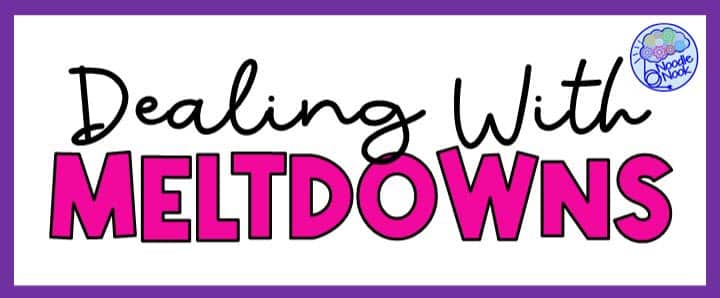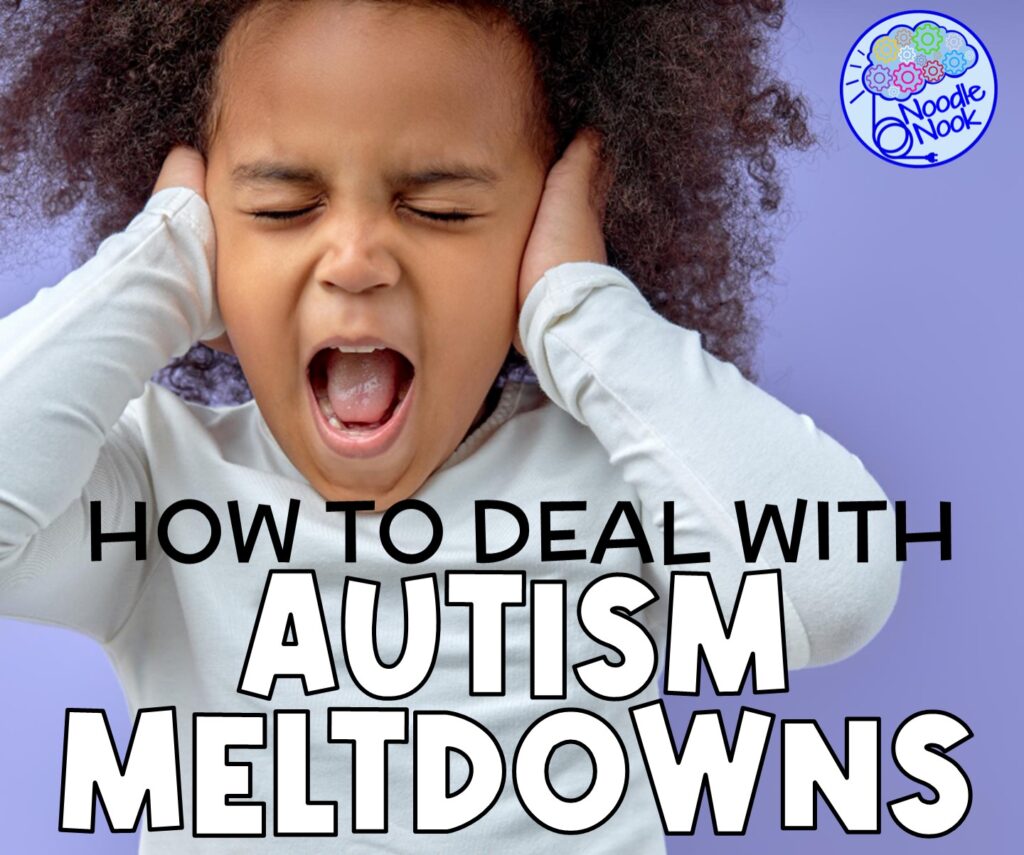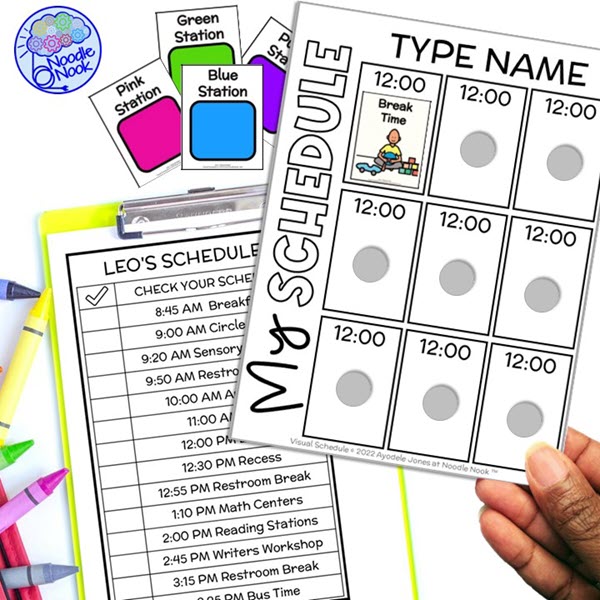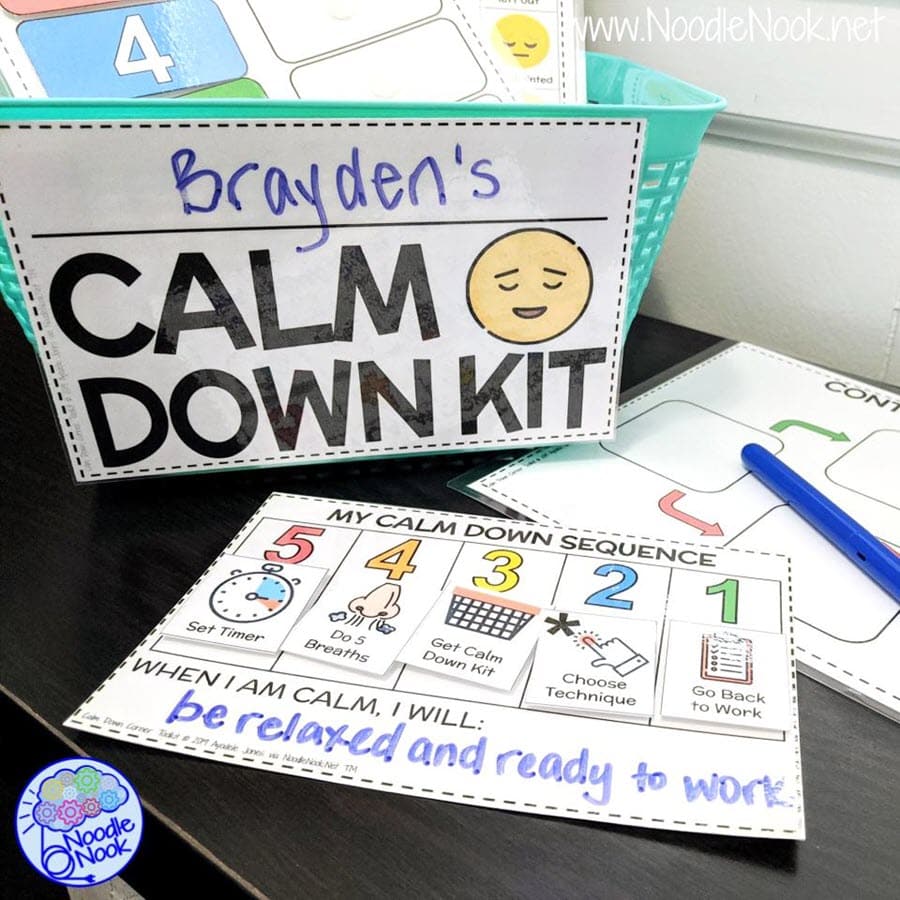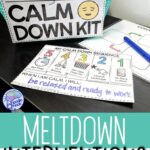Autism Spectrum Disorder (ASD) is a neurodevelopmental disorder that affects communication, social interactions, and behavior. One of the most challenging aspects of teaching autistic children is dealing with meltdowns in the classroom. Meltdowns are often triggered by sensory overload, sudden changes, or difficulty with communication. As a teacher, it’s crucial to understand how to prevent and manage these meltdowns to provide a safe space for autistic students to learn and grow. In this post, we’ll discuss some strategies for dealing with autism meltdowns in the classroom.
Understanding Autism Meltdowns
First off, an autism meltdown is not a temper tantrum. Meltdowns for individuals with autism are usually caused by overwhelming sensory input, anxiety or frustration. It is not about a desire for attention or control. For children with autism spectrum disorder, sensory input in public places can be overwhelming. So can social interactions, making both situations difficult to control their behavior.
As a teacher, its important to look for the triggers that are causing or intensifying an autistic meltdown. Is it a sensory issue, like sensory overstimulation? Maybe it’s abrupt changes to the typical school day schedule. It could be difficulty with something neurotypical peers wouldn’t struggle with, like too much eye contact or not being able to talk about their special interest. No matter what the trigger, identifying it makes identifying effective ways to help a student control their behavior easier.
What Does an Autism Meltdown Look Like?
An autism meltdown can look similar to temper tantrums. Just remember, this is an intense response to sensory overload or a sense of overwhelm.
These meltdowns will look different for every person with autism, but some common signs include:
- Being irritable or upset, which can include shouting or physical aggression
- Fidgeting or stimming more than usual
- Withdrawing or shutting down
- Difficulty communicating or responding to questions
- Heightened sensitivity to sensory inputs, such as sounds, lights, or touch
- Pacing, rocking back and forth, or other repetitive movements
- Asking repetitive questions for reassurance
- Turning inward or becoming non-responsive
Due to the overwhelming nature of these meltdowns, it’s important to maintain a calming and safe space. It’s also essential to approach someone experiencing an autism meltdown calmly and respectfully.
What Triggers an Autism Meltdown in the Classroom?
Dealing with autism meltdowns in the classroom can be hard. But knowing what is triggering the behavior is critically important in dealing with the function of the behavior. Autism meltdowns in the classroom can be triggered by a variety of factors, which can include:
- Sudden change in routines or unexpected transitions
- Sensory overload from bright lights, loud noises or strong smells
- Difficulty understanding or processing instructions
- Social challenges, such as difficulty making friends or feeling left out
- Anxiety or stress related to academic performance or social expectations
- Feeling overwhelmed or frustrated by a task or assignment
- Lack of structure or support to manage emotions
Whenever you know that one of these situations is going to happen in your classroom, it’s important to be proactive and use prevention strategies to mitigate the intensity of the meltdown. In other words, you’ve gotta get ahead of this thing while you can.
We are going to dive into prevention and interventions later in this post. In the meantime, be aware of the potential triggers in your classroom and work to develop and implement strategies to prevent full on meltdowns.
What are Some Early Warning Signs of a Meltdown?
As you are working with a child with autism, look for some early warning signs of an impending meltdown. Those may include some of the following:
- Increased anxiety or irritability
- Repetitive questioning or seeking reassurance
- Difficulty following instructions or completing tasks
- Heightened sensitivity to sensory inputs, such as sounds, lights, or touch
- Fidgeting, pacing, or other repetitive movements
- Withdrawing or shutting down
- Agitation or physical aggression
It’s important for teachers and staff to be aware of these potential warning signs as a way to work towards preventing and managing meltdowns in the classroom. As meltdowns are allowed to continue and intensify, you’ll start to see damage to property, violent behavior, and self-injury. We don’t want that.
Use the prevention and intervention strategies listed to support not just special needs students but all students. This will include things like a calming corner, sensory tools, visual schedules, or a structured environment to reduce the likelihood of a meltdown.
Prevention Strategies
When we talk about prevention strategies in a special education classroom, we are referring to proactive measures that teachers and staff can take to prevent challenging behaviors and meltdowns from occurring.
This is the best way to address meltdowns… before they happen.
Strategies can include creating a structured and supportive learning environment. You can work towards developing clear expectations and routines in the classroom. And you may also be more targeted when providing accommodations and modifications that support behavior. Ultimately, we want to focus on positive reinforcement and social-emotional learning to promote positive behavior before they happen.
Why Use Prevention Strategies in the Classroom
In an action movie, it’s always better for the hero to defuse the bomb before it goes off. In the classroom, as a teacher, it’s always better for you to manage a student or a potentially negative situation before it happens. Consequently, using prevention strategies when dealing with autism meltdowns in the classroom is important for several reasons.
Firstly, prevention strategies can help create a structured and supportive environment that meets the diverse needs of all learners. This will create a more inclusive and equitable classroom setting.
Secondly, prevention strategies can help reduce the occurrence of meltdowns and other challenging behaviors. This can improve the overall learning experience for students and reduce the potential for disruptions in the classroom.
Thirdly, prevention strategies can help support the social-emotional and mental health needs of students with autism. This can improve their overall well-being and success in school.
Clearly, using prevention strategies is an important component of effectively supporting the academic, social, and emotional needs of students with autism in the classroom. But just what strategies are most effective to implement?
Top Prevention Strategies
Teachers and staff can use several effective meltdown prevention strategies in the classroom when working with students who have autism. These strategies include:
- Creating a structured and predictable learning environment with consistent routines and clearly communicating expectations.
- Posting a daily schedule in the classroom and referencing it throughout the day.
- Using visual aids, such as schedules, pictures, and social stories, to help students understand expectations and transitions.
- Providing sensory tools or accommodations, such as designated quiet spaces, noise-cancelling headphones, or fidget toys, to help students regulate sensory input.
- Using positive reinforcement strategies, such as praise and rewards, to promote success and growth.
- Developing strong relationships with students based on trust, respect, and effective communication.
- Identifying and addressing potential triggers for meltdowns, such as sensory overload, anxiety, and difficulty with communication or transitions.
- Proactively teaching emotional regulation and coping skills, such as deep breathing, mindfulness, or problem-solving techniques.
By implementing these prevention strategies, you can get ahead of meltdowns before they happen. Put a plan in place with things like contingency maps, a quiet place in the classroom for when a student feels sensory overwhelm, and specifically teach ways to control their behavior.
RECAP: Proactive and Preventative Strategies for Meltdowns.
You can see from this list of proactive strategies that most of them are just best practice when working with students who have disabilities. Moreover, they are the backbone for good classroom management in neurotypical students as well. But here’s where we fall down as teachers. We don’t use these evidence-based practices and we are not consistent either. In other words, we know the things, but we don’t do the things, and, if we do, we don’t do them on the regular. And all of that will lead to failure. That means do the things and be consistent with them.
Intervention Strategies
We can’t always prevent a meltdown from happening. When you find yourself in the midst of an autism meltdown in the classroom, it’s time to use your intervention strategies. Intervention strategies focus on addressing existing problem behavior in students with disabilities through targeted and individualized supports and interventions. These strategies may include things like a functional behavior assessment (FBA), behavior intervention plans (BIP), and individualized behavior modification techniques.
How Are Intervention and Prevention Strategies for Behavior Different?
Prevention strategies focus on creating a structured and supportive learning environment and proactively addressing potential triggers for challenging behaviors before they occur. Prevention strategies include proactive measures such as creating a predictable environment, using visual aids, providing sensory accommodations, and teaching emotional regulation and coping skills.
Intervention Strategies are the individualized response we detail in a behavior plan that will occur when the behavior is happening. They are also the supports we put in place to teach a replacement behavior so a student can meet the same function with a socially appropriate approach.
While prevention strategies are important in supporting the diverse needs of all learners in the classroom and can reduce the occurrence of challenging behaviors, intervention strategies are necessary when a problem behavior has already arisen and requires targeted support and intervention at the individual level.
Top Intervention Strategies
Teachers can use several intervention strategies in the classroom when dealing with a student with autism who is having a meltdown. These strategies include:
- Remaining calm, speaking in a neutral tone, and approaching the student in a non-threatening manner.
- Using simple language and asking open-ended questions to understand what is causing the meltdown.
- Helping the student regulate their emotions by teaching them calming techniques, such as deep breathing or visualization.
- Modifying the environment by reducing sensory input or providing a designated safe space for the student to calm down. This may include removing a child from a public space and helping them access a calm down corner.
- Implementing a behavior intervention plan (BIP) that outlines specific strategies and supports tailored to the individual needs of the student.
- Involving the student and their parents or caregivers in creating and implementing the BIP to ensure it is effective and feasible.
- Providing positive reinforcement and praise for appropriate behavior and progress towards goals. This positive reward system or token board system would be detailed in advance.
It is important to note that teachers should tailor intervention strategies to meet the individual needs of each student and develop them in collaboration with the student, their parents or caregivers, and any relevant professionals such as special education teachers or behavior specialists.
A Word on Restraint
When it comes to using restraints in the classroom, default to your campus or district guidelines. It is important to note that the use of restraint should be a last resort and should only be used when there is an imminent threat of harm to the student or others.
The current best practice related to restraining a student with autism who is having a meltdown in the classroom includes:
- Implementing a behavior intervention plan (BIP) that includes strategies and supports to prevent meltdowns.
- Providing a safe and calm environment that supports the student’s regulatory needs and reduces sensory input.
- Using de-escalation techniques, such as remaining calm, speaking in a neutral tone, and providing simple verbal cues.
- Seeking guidance and support from a behavior specialist or other relevant professionals with expertise in working with students with autism.
Remember, in the event that restraints must be used, they should be used in a way that minimizes the risk of injury and is in compliance with applicable laws and regulations. Check and double-check the rules on your campus and in your district. And if you think you will need to restrain a student, ask for additional training to ensure that the use of restraint is safe and appropriate.
Working with the Team
Addressing problem behavior, including meltdowns, needs a team approach.
Related Service Providers
Working with related service providers is important because they bring a wealth of expertise and specialized knowledge to the situation.
- Occupational therapists can help with sensory integration and self-regulation techniques.
- Speech and language pathologists can help with communication strategies.
- Physical therapists can help with motor and coordination skills.
- Behavior specialists can help with behavior assessment, BIP development, and de-escalation techniques.
Collaborating with related service providers, teachers can develop a comprehensive and individualized approach to supporting the student’s behavior and academic success, ensuring that all aspects of the student’s needs are being addressed in a coordinated and effective manner.
Working with Parents and Families
Collaborating with families is also important. It helps build a positive relationship between them and the teacher, which can lead to better communication and a more supportive environment for the child.
Moreover, the families are often dealing with the same meltdowns at home and in the community. That means they may have some insight as to the triggers, how it impacts the child’s transition goals, and what has and has not worked in the past.
Parents and families are a wealth of knowledge, so be sure to include them in the process as you tackle a child’s behavior and work together to address meltdowns. READ MORE: How to Include Families in the IEP Process
RECAP: Dealing with Autism Meltdowns in the Classroom
Dealing with autism meltdowns in the classroom can be challenging, but with the right strategies and tools, teachers can provide a safe space for autistic students to learn and grow. Understanding the child’s needs, creating a daily routine, and providing sensory tools and quiet space can be effective in preventing and managing meltdowns. Collaborating with parents and related services can also be a great tool in developing an effective plan for managing meltdowns in the classroom. The most important thing, though, is to remain calm and empathetic and to recognize that every child’s needs are different. You can do this!
References
Jones, G. (2022, 08 03). Tantrums vs Autism Meltdowns. Retrieved from Experia: https://www.experia.co.uk/blog/7-differences-between-tantrums-and-autism-meltdowns/
National Autistic Society. (n.d.). Meltdowns – a guide for all audiences. Retrieved from National Autistic Society: https://www.autism.org.uk/advice-and-guidance/topics/behaviour/meltdowns/all-audiences
PsychCentral. (2022, 03 07). All About ‘Autism Meltdowns’: Why They Happen and How to Cope. Retrieved from PsychCentral: https://psychcentral.com/autism/autism-meltdowns
Article Citation: [cite]
